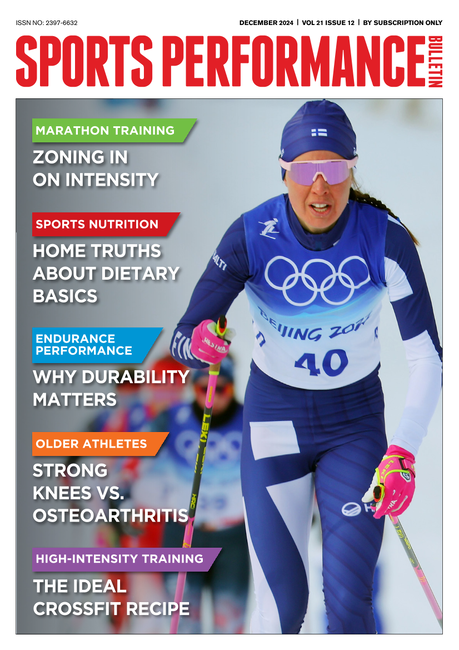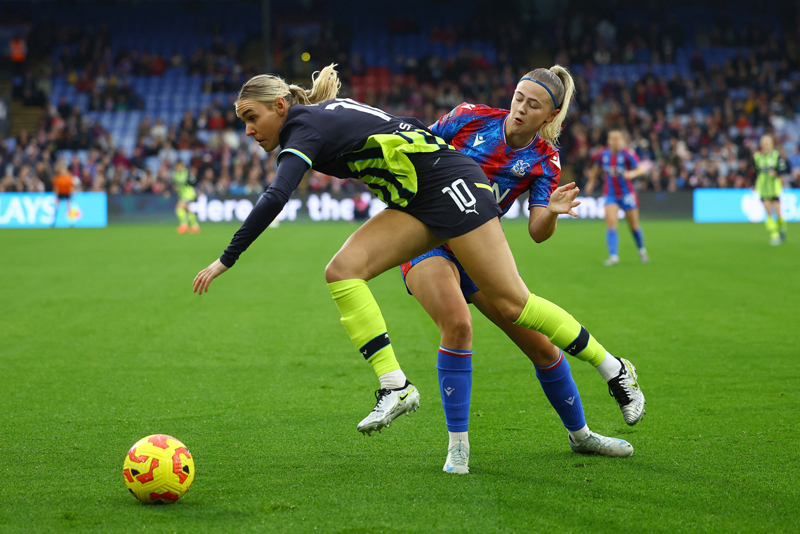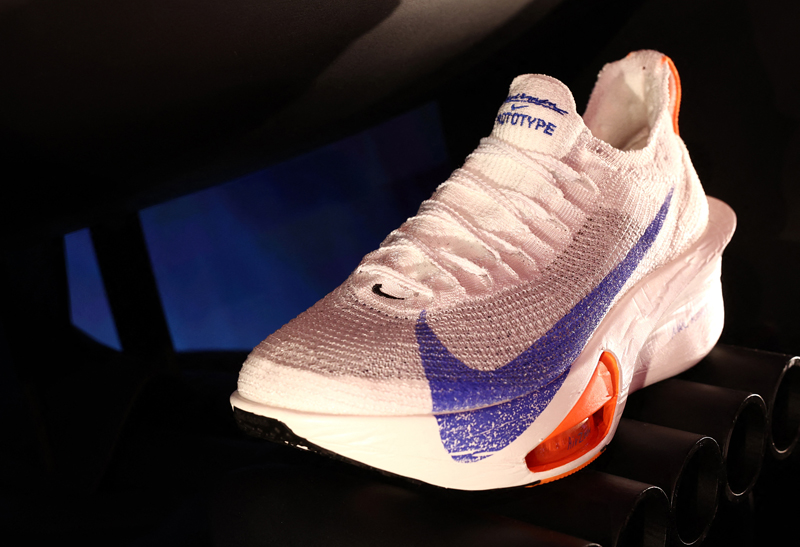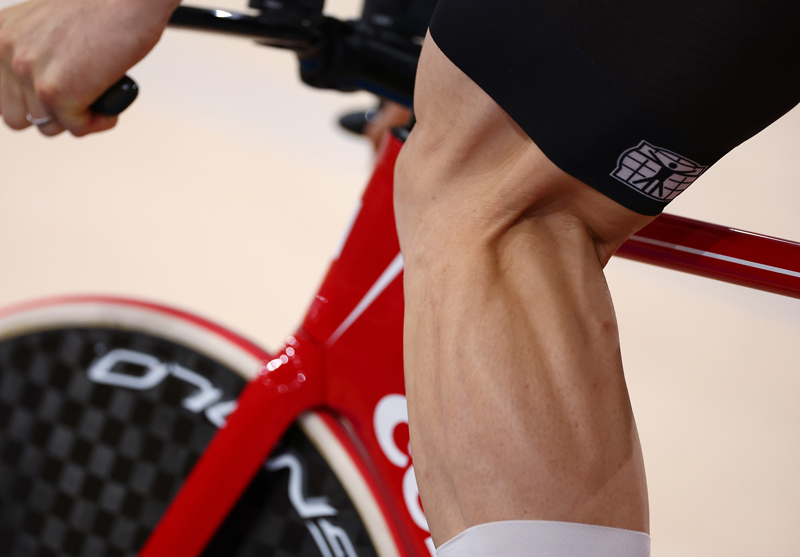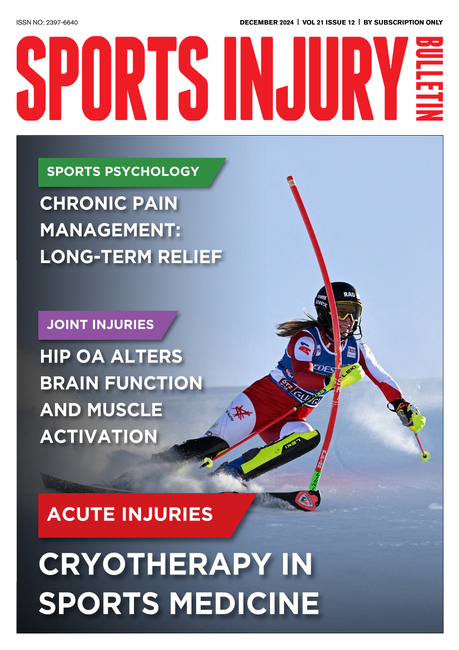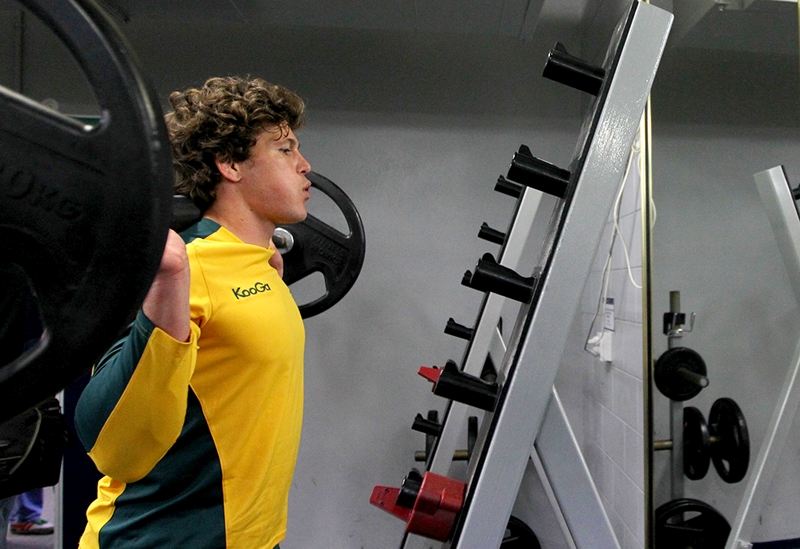 The 'squat' is one of the most popular strengthening exercises carried out by individuals in the athletic and injury-rehabilitation communities - and for good reason. When they squat, athletes and people recovering from injuries flex their hips, knees, and ankles simultaneously, thus activating all the key muscles in the legs, including the hamstrings, glutes, quads, and calf muscles, as well as low-back muscles which stabilize the upper body. Because squatting can both strengthen and enhance the coordination of all these muscle groups, it is an exercise which appears to offer - to use American slang - a 'lot of bang for your buck', i.e., lots of benefits for such a simple movement. Indeed, research has linked squat training with improvements in sprint velocity, vertical jumping height, and horizontal jumping distance, attributes which are important over a wide range of athletic endeavours.
The 'squat' is one of the most popular strengthening exercises carried out by individuals in the athletic and injury-rehabilitation communities - and for good reason. When they squat, athletes and people recovering from injuries flex their hips, knees, and ankles simultaneously, thus activating all the key muscles in the legs, including the hamstrings, glutes, quads, and calf muscles, as well as low-back muscles which stabilize the upper body. Because squatting can both strengthen and enhance the coordination of all these muscle groups, it is an exercise which appears to offer - to use American slang - a 'lot of bang for your buck', i.e., lots of benefits for such a simple movement. Indeed, research has linked squat training with improvements in sprint velocity, vertical jumping height, and horizontal jumping distance, attributes which are important over a wide range of athletic endeavours.Typically, an athlete carrying out a squat starts in a standing position with a barbell held high on his/her back. The athlete then bends the knees until the thighs are approximately parallel with the floor, usually with the upper body held fairly erect or inclined forward slightly. One squat 'repetition' is completed simply by straightening the legs and returning to the starting, standing position.
It's a basic movement, but squatting is not without controversy. Specifically, squat critics have contended that squatting is linked with an increased risk of knee and/or low-back injury and pain. These naysayers argue that other leg-strengthening exercises (for example, leg extensions, leg presses, and hamstring curls carried out on weight machines) are safer and are as effective as squatting at improving leg-muscle strength.
Before we examine the specific scientific literature concerning the relative safety of squatting, it's important to bear in mind that any resistance exercise - if conducted improperly or excessively - can lead to injury. Maintenance of appropriate exercise technique, training volume, and intensity are of paramount importance in keeping injuries at bay. To put it another way, when individuals hurt themselves while squatting, it may not be the exercise itself which is harmful - but the manner in which the squatting is performed.
The US Army actually banned it
Scientific support for the notion that squatting is harmful to the knees dates back to studies carried out in the 1950s and 1960s. This research basically suggested that the squat exercise, even when properly done, stretched knee ligaments in both medial-lateral and posterior-anterior directions, leading to increased instability in the knees. Because of these investigations, some branches of the military in the United States actually discontinued the use of squatting in their training programmes ('Safety of the Squat Exercise,' Current Comment from the American College of Sports Medicine, pp. 1-3, March 2000).There were some problems with this anti-squat research, however. In one study, for example, the subjects were active parachute jumpers. 'Sky divers' are notoriously prone to knee injury, both because of the high impact forces associated with landing from a jump and because a diver's legs may be caught in parachute lines as a parachute opens, straining the knees. Thus, the increased knee laxity in these subjects may well have been the result of their jumping, not their squatting.
Nonetheless, squatting has continued to have a stain on its character, although its bad reputation has faded gradually thanks to studies like the one carried out at the University of Alabama. In that work, the knees of 100 male and female college students were measured for stability using a knee ligament arthrometer during nine different tests ('The effect of the squat exercise on knee stability', Medicine and Science in Sports and Exercise, Volume 21 (3), pp. 299-303, 1989). Over an eight-week training programme, individuals who carried out various squatting exercises did not develop reduced knee stability, compared to non-squatting controls. To assess the effects of longer-term squat training, the researchers examined 27 male powerlifters (14 of whom were rated elite or master class) and 28 male weightlifters (eight of whom were elite or master class) using the same tests. As it turned out, the knees of powerlifters and weightlifters were actually significantly LESS lax than those of control individuals during tests of knee-joint flexibility. When the data on powerlifters and weightlifters were also analyzed according to years of experience and skill level, no negative effect of squat training on knee stability was demonstrated in either of the groups tested.
A separate study carried out at about the same time seemed to suggest that squatting might enhance knee unstableness after all. However, subjects in this study actually utilized a variety of different intense and exhausting exercises (including squats) during their workouts, and thus it is likely that their knee 'looseness' was the result of the range of different exercises utilized, muscular fatigue, or even elevation of body temperature. Increased temperature tends to untighten muscles and connective tissues and thus promote movement at joints ('Safety of the Squat Exercise,' Current Comment from the American College of Sports Medicine, pp. 1-3, March 2000).
What about rehab?
As squatting's reputation began to clear, experts nonetheless continued to claim that squat exercises should be avoided during early stages of rehabilitation following knee injury or surgery. A key contention was that weight-bearing activity such as squatting could put too much pressure on injured knees, leading to re-injury or at the very least a retardation of recovery.Many of these fears were put to rest, however, by solid research showing that squatting could actually be EASIER on the knees than many of the often-recommended, 'safer' squat substitutes. For example, researchers at Cambridge Consultants Ltd. in Cambridge (UK) recently looked at the forces acting on two key knee ligaments - the anterior cruciate ligament (ACL) and the posterior cruciate ligament - during typical rehabilitation exercises ('Cruciate ligament forces in the human knee during rehabilitation exercises', Clinical Biomechanics, Volume 15-3 (March), pp.176-187, 2000). The anterior and posterior cruciate ligaments are frequent sites of injury in a variety of different sporting activities. In the Cambridge research, a combination of non-invasive measurements and mathematical modelling of the lower limb was utilized to determine what was happening at the knee (it is very difficult to measure ligament forces 'in vivo' in humans). Sixteen subjects carried out isokinetic (constant-speed) movements, squat training, and isometric exercises while the external forces and limb kinematics were measured ('isometric' exercises are those in which muscle force is generated but no movement occurs at a joint). The internal forces acting on the knee ligaments during the various movements were calculated using a geometrical model of the lower limb and a unique technique called the 'dynamically determinate one-sided constraint' analysis procedure.
Knee loading
During both isokinetic extension (active straightening of the leg at a constant speed) and isometric extension (attempting to straighten the leg against unyielding resistance), the peak anterior-cruciate-ligament forces occurred at knee angles of 35 to 40 degrees and reached approximately 55 per cent of body weight. During squats, the anterior cruciate ligament was much more lightly loaded.During both isokinetic and isometric extension, peak posterior cruciate ligament forces were lower and occurred at knee angles of approximately 90 degrees. During squats, the posterior cruciate wasn't 'loaded' (i.e., subject to force) until knee angles reached about 50 degrees, after which loading increased to about 3.5 times body weight at the lowest point of the squat.
During isokinetic and isometric flexion of the leg (i.e., 'bending' the knee so that the heel approached - or attempted to approach in the case of isometric exercise - the buttocks), peak posterior cruciate forces occurred at around 90 degrees and sometimes exceeded four times body weight, but the anterior cruciate was not loaded at all. As mentioned, during squats, the anterior cruciate was very lightly loaded at knee angles up to 50 degrees, after which it was the posterior-cruciate's turn to bear the brunt of the exercise, with top forces going up to 3.5 times body weight at the deepest end of the squat.
Note that this research suggests that for individuals with anterior cruciate injuries, squats should be safer than isokinetic or isometric extension for quadriceps strengthening (leg extension), since forces acting on the ACL were lower during squatting, compared with both isokinetic and isometric extension. Yet, individuals with ACL injuries are often told to eschew squatting for extended periods of time - and instead work on leg-extension machines which actually may place more stress on the anterior cruciate ligament. For individuals with ACL problems, isokinetic flexion, isometric flexion, and squatting may safely be used for strengthening of the hamstrings, but note that isokinetic and isometric flexion are less 'functional' than squatting, i.e., they fail to duplicate the weight-bearing, synchronous multi-joint movements associated with sporting activity.
As the researchers pointed out, for individuals with posterior cruciate injuries isokinetic extension at knee angles less than 70 degrees should be safe but isokinetic flexion and very deep squats should be avoided until healing is well-advanced. Overall, this research suggested that squatting is a safe and effective exercise to promote the recapture of muscular strength following ligamentous injury to the knee (provided deep squats are avoided by those with posterior cruciate problems), and that squatting actually often puts less strain on internal knee ligaments, compared with conventional and popular isometric and isokinetic knee-flexion and knee-extension exercises.
What other studies show
The findings of the Cambridge study are supported by several other high-quality investigations. In related work carried out at the McClure Musculoskeletal Research Center in the Department of Orthopaedics and Rehabilitation at the University of Vermont College of Medicine in Burlington, Vermont, researchers also looked at the effects of squatting versus 'open-chain' (i.e., non-weight-bearing) knee flexion and extension on the anterior cruciate ligament ('The strain behaviour of the anterior cruciate ligament during squatting and active flexion-extension: A comparison of an open and a closed kinetic chain exercise', American Journal of Sports Medicine, Volume 25-6 (November-December), pp. 823-829, 1997).In this Vermont study, the maximum anterior cruciate ligament strain values obtained during squatting did not differ from those obtained during active flexion and extension of the knee during non-weight-bearing exercise. Even when external resistance was added so that muscular force production would necessarily increase, anterior cruciate ligament strain values obtained during squatting remained unchanged. To put it another way, squatting, even though it produces a substantial compressive knee-joint force, does not place more stress on the anterior cruciate ligament, compared to conventional, open-chain knee flexion and extension. In addition, increasing resistance during the squat exercise does not produce a significant increase in anterior cruciate ligament strain values, whereas increased resistance during active, open-chain extension of the knee does increase the stress on the ACL.
Recent research carried out at the American Sports Medicine Institute in Birmingham, Alabama supports the idea that squatting is not only relatively safe for the knees but also can be superior to open-chain exercise for improving knee stability and strength ('Biomechanics of the knee during closed kinetic chain and open kinetic chain exercises, Medicine and Science in Sports and Exercise, vol. 30-4 (April), pp. 556-569, 1998). In this Alabama investigation, 10 male subjects performed three repetitions of closed-kinetic-chain exercise (squats and leg presses) and open-kinetic-chain exercise (knee extensions) at their 12-repetition maximums (i.e., using a resistance great enough so that no more than 12 reps could be completed). Kinematic, kinetic, and electromyographic data were calculated using video cameras (60 Hz), force transducers (960 Hz), and EMG (960 Hz). Mathematical muscle modelling and optimization techniques were employed to estimate internal muscle forces.
Overall, the squat generated approximately twice as much hamstring activity as the leg press and knee extensions, as one might expect (the limited activity of the hamstrings during extensions is a no-brainer; the superiority of squats over leg presses in stimulating and thus improving the strength of the hamstrings is due to the fact that during squatting the hamstrings must control hip flexion, whereas leg presses are usually carried out in a seated or lying-down posture, removing the requirement for the hamstrings to support and control the hips). Quadriceps muscle activity was greatest during squats and leg presses when the knee was near full flexion (which by the way means that if you can increase the depth of your squatting safely, you should by all means do so) - and in leg extensions when the knee was near full extension.
Better for the quads, too
Squats and leg presses produced more activity in the vastus medialis and vastus lateralis components of the quadriceps muscles (the inside and outside portions of the quads), compared with leg extensions, indicating that squats and leg presses would be superior to extensions for 'vasti' strengthening.Compressive force between the femur and tibia (upper and lower leg bones) was greatest near full flexion for the squats and leg presses - but peaked near full extension in the leg-extension exercise.
Peak tension in the posterior cruciate ligament (PCL) was approximately twice as great during squatting and leg pressing, compared to leg extensions, and PCL stress increased with knee flexion. This suggested that deep squatting and full flexion during leg pressing would be contraindicated for someone with a recent posterior-cruciate injury but also revealed that such activities - if carried out cautiously - could be helpful to the athlete hoping to keep a healthy posterior-cruciate ligament free from injury (by gradually putting a little more strain than usual on the PCL, you could help fortify it against injury).
Significant tension in the anterior cruciate ligament was present only during leg extensions (it peaked when the knee was close to full extension), not during squatting and leg pressing, again suggesting that squatting is a relatively safe activity for individuals with anterior-cruciate problems.
Compressive forces between the knee cap and femur were greatest during squatting and leg pressing near full flexion, indicating that deep squats and full-flexion presses might not be a good idea for individuals with patellofemoral problems. Patellofemoral compressive force was greatest during knee extensions in the mid-range of the knee-extending phase of the exercise.
Squatting is sports specific
The Alabama scientists concluded rather blandly that 'An understanding of these results can help in choosing appropriate exercises for rehabilitation and training.' We can add that their research suggests that squatting is by and large a safe activity for individuals with knee problems (as long as those with posterior-cruciate, tibial-femoral, and patellofemoral problems avoid deep squats) and offers some advantages over leg extensions for quadriceps-muscle strengthening. The sports specificity of squatting (i.e., the fact that it is carried out in a weight-bearing, ready-for-movement posture, in contrast to the seated position associated with leg extensions) puts squatting in an even more favourable light. In theory, the strength gains associated with squat training should involve a coordination component and should carry over to an athlete's specific sporting activity far better than the upswings in strength associated with leg extensions. Improvements in functional strength should themselves lead to a lower risk of injury, and other high-quality research has supported the notion that squatting is a terrific way to upgrade sport-specific strength. In a study carried out at the Department of Rehabilitation Medicine at Goteborg University in Sweden, 24 healthy subjects carried out either barbell-squat or knee-extension plus hip-adduction variable-resistance exercise twice a week for six weeks. All subjects were tested prior to training and at the completion of the training period. A three-repetition-max barbell squat and a vertical jump test were used to monitor the actual effects of training ('Weight training of the thigh muscles using closed vs. open kinetic chain exercises: a comparison of performance enhancement', J Orthop Sports Phys Ther, Vol 27-1 (January), pp. 3-8, 1998 ).After six weeks, the squat-group members improved their three-rep-max squatting by 23 kg (31%), which was significantly more than the 12-kg (13%) gain attained by the individuals who trained with knee extensions and hip adductions (i.e., the open-kinetic-chain group). In the vertical jump test, the squatters improved significantly by 5 cm (10%), while the open-chain group could not jump even a fraction of a centimetre higher. The researchers partially attributed the superiority of squatting over extension and adduction to 'neural adaptation', i.e., to the fact that the test movements (squatting and jumping) more closely paralleled the actual training movements in the case of squatting, so that the 'lessons learned' by the nervous system in controlling and coordinating the training squats could be carried over easily to the squatting and jumping tests.
Squatting in Middlesex
Research carried out at Middlesex Hospital in London supported the idea that squatting is superior to leg extensions at improving sports-specific strength and performance. In this investigation, 20 uninjured female subjects performed strength tests for the quadriceps muscles during open-chain kinetic exercise (leg extensions) and for the hip, knee, and ankle extensors during the squat exercise (closed-chain). Both vertical- and standing-long-jump performances were assessed using an optoelectric motion analysis system ('The relationship between open and closed kinetic chain strength of the lower limb and jumping performance', J Orthop Sports Phys Ther, Vol. 27-6 (June), pp. 430-435, 1998).The analysis revealed that squatting-strength scores were very highly correlated with vertical jump performances and also standing- long-jump performances. Meanwhile, open-chain (leg-extension) strength demonstrated very little correlation with vertical jump and standing long jump performance. In other words, if you want to be able to jump high or leap long in your sporting activity, you would be wise to focus very heavily on squat training, since it correlates very, very well with both attributes. Even though open-chain leg-extension exercises also activate the quads, the strength gained is apparently specific to the open-chain activity and carries over very poorly to the closed-chain actions associated with real sporting activities (i.e., jumping in a basketball or volley-ball game, bounding over an opponent in a rugby scrum, or leaping to head or kick the ball during a soccer match).
And it may make you faster
Research also suggests that squatting can improve not just jumping ability but actual running SPEED. In research carried out at the Human Performance Laboratory at the NSW Academy of Sport in Sydney, Australia, subjects were divided into two groups, one of which performed squatting exercises while the other served as a control. At the end of the training period, squatting subjects improved performance during a 40-metre sprint by 2.2 per cent and bolstered power output during an all-out, six-second cycling test by 9 per cent, while control subjects failed to improve at all ('The ability of tests of muscular function to reflect training-induced changes in performance', Journal of Sport Science, Volume 15-2 (April), pp. 191-200, 1997).So far we have acted as though knee injuries were the only potential problems associated with carrying out squatting exercises, but in truth exercise experts have also been concerned about the effects of squatting on the spinal column. Without a doubt, squatting with resistance placed across the shoulders on the upper back does increase the compressive forces acting on the spine. In fact, research has suggested that forces acting on the lumbar spine during half-squats carried out with a loaded barbell can be equal to six to 10 times body weight. This may increase the risk of a rupture of an intervertebral disc or even a stress fracture of a vertebra.
Of course, one way to get around this is to avoid lifting excessive weight. Squatting should always be carried out initially without added weight (or with an unloaded barbell if a barbell is being utilized), with weight added gradually, cautiously, and progressively as strength and coordination improve.
Stooping in Bristol
Resistance-training experts also generally say that maintaining an erect posture during squatting (instead of bending forward at the hips) helps to evenly distribute the forces on the spine and decreases the incidence of injury. Actual research, however, reveals that things are not quite this simple. In work carried out at the University of Bristol, 21 men and 18 women lifted objects from the ground while either squatting (i.e., significantly bending the knees) or stooping (keeping straighter legs and bending primarily at the hips) to pick up the objects. The researchers also varied the mass of the objects, their bulk, their distance in front of the feet of the subjects, the distance of the objects away from the sagittal plane (an imaginary plane which runs through the middle of the body, dividing it into equal left and right halves), and the speed of movement utilized to pick up the objects. Spinal compressive forces were assessed by measuring the peak extensor moments generated by the back muscles and fascia during the lifts. Extensor moments were calculated from the EMG activity of the erector spinae muscles, using corrections for muscle length, contraction velocity and electro-mechanical delay. The bending forces ('bending torques') acting on the intervertebral discs and ligaments were quantified by comparing dynamic measurements of lumbar flexion with the normalised bending properties of cadaveric lumbar spines ('Bending and compressive stresses acting on the lumbar spine during lifting activities,' Journal of Biomechanics, vol. 27(10, pp. 1237-1248, 1994).The measurements made by the Bristol scientists showed that stoop lifting actually reduced the compressive forces acting on the spine by about 10%, compared to squat lifting, putting 'stoops' in a slightly favourable light. However, stoop lifting increased the bending torque - the kind of force most likely to cause one vertebra to slip over another and induce spondylolisthesis - by about 75%. Thus, adding a bit of stooping to a squat may actually slightly reduce spinal compression but probably increases the chances of sustaining the kind of injury (vertebral displacement) associating with high bending forces.
In this study, compression force and bending torque both increased substantially as the lifted objects increased in mass, bulk, and distance from the feet. Non-sagittal plane lifts increased the bending torque by about 30% - but not the compression force. The fastest lifts increased compressive forces by 60% but did not increase bending torque. The Bristol researchers concluded that the risk of injury during squatting-type movements depended not just on the mass of the object lifted but also on the speed of movement and the size and position of the hoisted object. Basically, squatting safety increases as movement speed is lessened, resistance is reduced, the centre of mass of the lifted object approaches the sagittal plane, the size of the object decreases, and the resistance is brought closer to the body. Why weightlifters have little back pain
Good abdominal strength probably also helps to protect the spine during squatting. During squats carried out with heavy resistance, holding one's breath increases intra-abdominal pressure and is likely to help stabilize the spine. Wearing a weight belt may also increase intra-abdominal pressure and thus prop up the spine.
Although squatting can place heavy loads on the back, research has shown that squatters and weightlifters in general actually have a relatively low frequency of back pain. This shouldn't be any more surprising than the findings from recent research carried out with endurance runners which showed that runners actually have a fairly small risk of chronic knee pain, compared to the sedentary population. Basically, activities which strengthen muscles and joints - as long as they are not carried out to excess - tend to protect the body from damage, not chip away at its integrity. The study which detected a low risk of back pain for weightlifters also revealed that good spinal flexibility, lifting with a straight back, and strong paravertebral muscles (muscles which run between the vertebrae) protect strength trainers from back troubles. In former lifters, the incidence of back pain is less than in the general population ('Safety of the Squat Exercise', Current Comment from the American College of Sports Medicine, pp. 1-3, March 2000).
The bottom line?
Squatting is basically a safe activity (when carried out in the proper fashion) which can have a tremendously positive impact on leg-muscle strength. The following tips should help you reduce your risk of injury when you carry out squat training:1. Initially, squat only to the point at which the tops of your thighs are parallel with the floor. Over time, as your strength and coordination improve and you remain injury-free, you can increase the depth of your squats. As squatting depth increases, quadriceps-muscle activation also increases, and thus expanding the depth of squatting should be associated with augmented gains in quad strength. To be fair, though, we should mention that few sports (except for weightlifting) actually require you to perform from a deep-squat position. Since gains in strength are partially a neural phenomenon, utilization of very deep squats may have a smaller than expected effect on your leg strength during your sporting activity (i.e., your nervous system may improve its ability to organize muscular force production during deep squatting, but this organizing will never come into play during competition, where deep squats are rare).
2. Don't squat when you are fatigued, and try to avoid training to failure when you are squatting. If you are exhausted, you may lose control of the squat, and - if you are utilizing a loaded barbell - you may end up twisting a knee, increasing your risk of knee-cartilage damage.
3. For two-legged squats, use a shoulder-width foot stance.
4. Always descend and ascend in a controlled and coordinated manner; don't jerk or rock back and forth. Avoid twisting movements in the bottom position.
5. Back pain and knee pain are indicators that you are progressing too fast with your squat training. If either type of pain occurs, you should rest until the pain disappears and then decrease your resistance and the number of squat repetitions you are completing.
Keep it specific
While we have so far approached squatting as a two-legged activity, you should bear in mind that optimal strength training should produce the best-possible adaptations of the muscular AND nervous systems. For this to occur, strength-training movements should attempt to duplicate the movements associated with your sporting activity as much as possible. If this is not the case, muscular strength may be developed, but it will not necessarily be the strength needed to perform at a high level in your sport. True, neural coordination of movement may be enhanced, but the enhancements may be strictly associated with movements which are dissimilar to those used in your sport.For these reasons, individuals engaged in sports which involve running should prefer - for reasons related both to performance and injury prevention - the one-leg squat over the two-leg version. During running full body weight is supported by one leg at a time, not by both legs simultaneously. Thus, it makes sense for athletes who run to choose an exercise which will enhance leg-muscle force production when the left and right leg a


